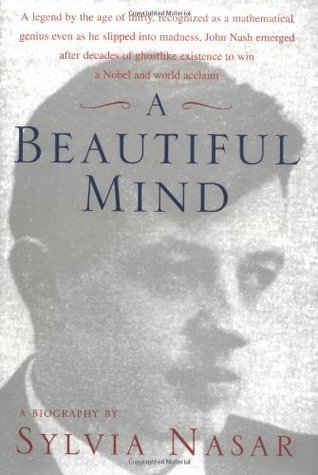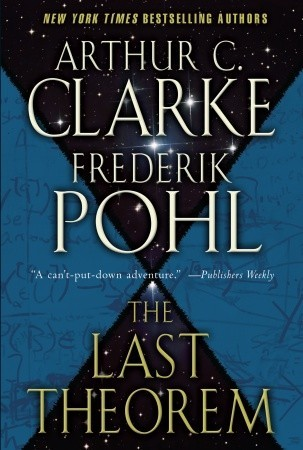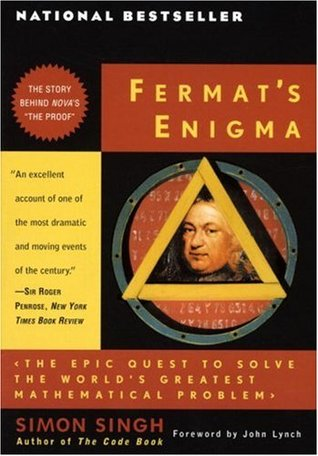The Numbers Speak for Themselves!
Math’s infinite mysteries and beauty unfold in this follow-up to the best-selling The Science Book. Beginning millions of years ago with ancient “ant odometers” and moving through time to our modern-day quest for new dimensions, it covers 250 milestones in mathematical history. Among the numerous delights readers will learn about as they dip into this inviting anthology: cicada-generated prime numbers, magic squares from centuries ago, the discovery of pi and calculus, and the butterfly effect. Each topic gets a lavishly illustrated spread with stunning color art, along with formulas and concepts, fascinating facts about scientists’ lives, and real-world applications of the theorems.
Barnes and Noble Review: John Nash was a prodigy. A star of the already prestigious Princeton and MIT mathematics departments in the 1950s, Nash was known for his ability to penetrate and solve “deep problems” — those thought virtually unsolvable by his peers. His greatest contribution came with his advancement of game theory that revolutionized economics. A professor in his 20s, he was a leader in his field, a recognized genius. And then his life and career collapsed. In 1959, at the age of 30, Nash had a schizophrenic breakdown that saw him disappear from the world of mathematics. He lost his job, his wife, and, seemingly, his sanity. Sylvia Nasar’s detailed biography of the man, his achievements, and his descent into mental illness is as affectionate towards its subject as it is probing into the often oddly parallel worlds of academia and mental hospitals, genius and madness. Nasar stays focused on the life of Nash but manages to bring to it insights into the fine line between ill and well. Notably, her behind-the-scenes look at the Nobel Prize committee’s consideration of Nash’s work and their trepidation at awarding their prestigious prize to a “madman” is an interesting discussion. Ultimately, the story has a bizarre and happy ending. At 66, Nash inexplicably recovered from his illness, returned to academia, and was awarded the Nobel Prize for economics. (Greg Sewell)
When Ranjit Subramanian, a Sri Lankan with a special gift for numbers, writes a three-page proof of the coveted “Last Theorem,” which French mathematician Pierre de Fermat claimed to have discovered (but never recorded) in 1637, Ranjit’s achievement is hailed as a work of genius, bringing him fame and fortune. But it also brings him to the attention of the National Security Agency and a shadowy United Nations outfit called Pax per Fidem-or Peace Through Transparency-whose secretive workings belie its name. Suddenly Ranjit-along with his family-finds himself swept up in world-shaking events, his genius for abstract mathematical thought put to uses that are both concrete and potentially deadly.
xn + yn = zn, where n represents 3, 4, 5, ...no solution “I have discovered a truly marvelous demonstration of this proposition which this margin is too narrow to contain.” With these words, the seventeenth-century French mathematician Pierre de Fermat threw down the gauntlet to future generations. What came to be known as Fermat’s Last Theorem looked simple; proving it, however, became the Holy Grail of mathematics, baffling its finest minds for more than 350 years. In Fermat’s Enigma–based on the author’s award-winning documentary film, which aired on PBS’s “Nova”–Simon Singh tells the astonishingly entertaining story of the pursuit of that grail, and the lives that were devoted to, sacrificed for, and saved by it. Here is a mesmerizing tale of heartbreak and mastery that will forever change your feelings about mathematics.
 The Math Book: From Pythagoras to the 57th Dimension, 250 Milestones in the History of Mathematics by Clifford A. Pickover (2009)
The Math Book: From Pythagoras to the 57th Dimension, 250 Milestones in the History of Mathematics by Clifford A. Pickover (2009)
 A Beautiful Mind by Sylvia Nasar (1998)
A Beautiful Mind by Sylvia Nasar (1998)
 The Last Theorem by Arthur C. Clarke and Frederick Pohl (2008)
The Last Theorem by Arthur C. Clarke and Frederick Pohl (2008)
 Fermat’s Enigma: The Epic Quest to Solve the World’s Greatest Mathematical Problem by Simon Singh (1997)
Fermat’s Enigma: The Epic Quest to Solve the World’s Greatest Mathematical Problem by Simon Singh (1997)
|
|||
| search engine by freefind |
Your ad could be in the next issue of idleguy.com for as little as $6 per month. Contact Fearless Rick using the form on page 12 for more information.
Use Coupon Code SUMMER20 for 20% off all orders at the HOT SUMMERTIME SALE of vintage magazines, going on now!